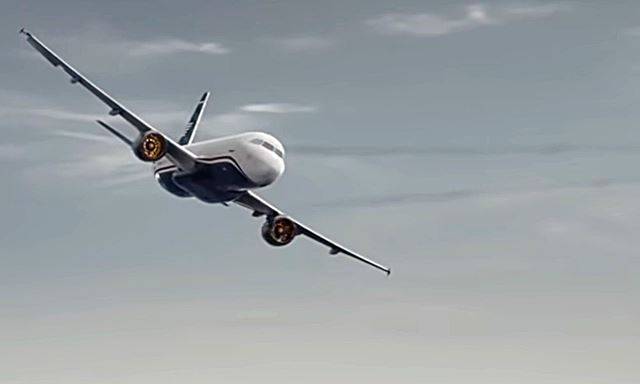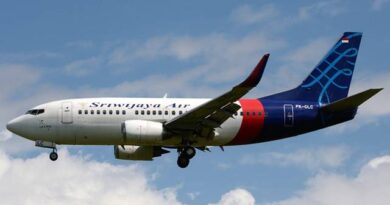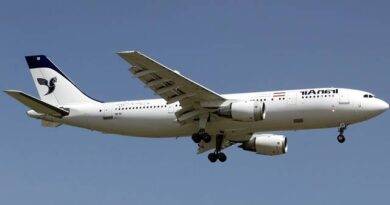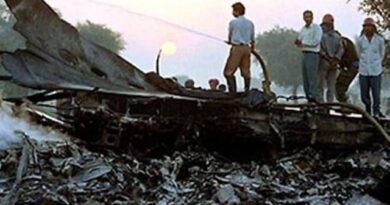US Airways Flight 1549
Aboard January 15, 2009, US Airways flight 1549 departed from LaGuardia Airport in New York City, USA, for Charlotte Douglas International Airport in North Carolina, carrying 150 passengers on American Airlines flight TWE1549 as well as 5 crew members. After takeoff, Airbus A320- 214 made an emergency landing in the Hudson River in New York.
In 2016, the movie Sully concentrated on it. Tom Hanks portrays the captain pilot, Chesley” Sully” Sullenberger, while Aaron Eckhart portrays the first officer, Jeffrey” Jeff” Skiles.

DETAILS – US Airways Flight 1549
At 3:25 PM, the aircraft departed from LaGuardia Airport. The plane was planned to make the first leg to Charlotte, North Carolina, and then continue to Seattle, Washington. However, things did not go as planned…
The plane crashed into a flock of Canadian geese on the departure path right after takeoff. Canadian geese are fairly large birds and their wingspan can reach up to 190cm. As a result of the collision, both engines of the plane failed. The plane was unable to provide the thrust force necessary to fly. The plane was experiencing an emergency situation. Pilots Sully and Jeff were in constant contact with ATC– Air Traffic Controller and reported the situation to the controller.
There were very important moments in the cockpit of the plane. The pilots had to calculate all the variables and make the right decision. The pilots checked the gauges on the aircraft and performed the necessary procedures to restart the engines. However, the engines were completely destroyed by the impact of the collision.
The pilots were also in coordination with ATC. Meanwhile, they considered alternatives to divert to LaGuardia Airport or to land at Teterboro Airport in New Jersey. Teterboro airport in New Jersey was located close to LaGuardia airport. So it would be a reasonable solution, but would the Plane be able to fly all the way there? The pilots, and especially Captain Sully, had to consider all the variables together.
After evaluating all the variables together, Captain Sully decided that the plane was not high enough and could not reach both airports with its current glide potential. The plane was flying over the Hudson river and at that moment the Pilots decided that the most logical course of action was to try to land the plane in the Hudson river. It was a tremendous responsibility, but at that moment it was an irreversible moment where responsibility and decision had to be made.
Captain Sully was a very experienced pilot and had served in the US Air Force in previous years. Now it was decided that the pilots would try to land on the Hudson River. After the decision was made, announcements were made inside the aircraft and passengers were asked to take an emergency landing position. There were very difficult moments on the plane…
The Hudson river looked calm and windless. The pilots took the landing position and approached the river. The plane would land on the fuselage. None of us know for sure what the moment of landing was like. However, it is a fact that the plane was not destroyed and was floating on the river. That was a miracle !
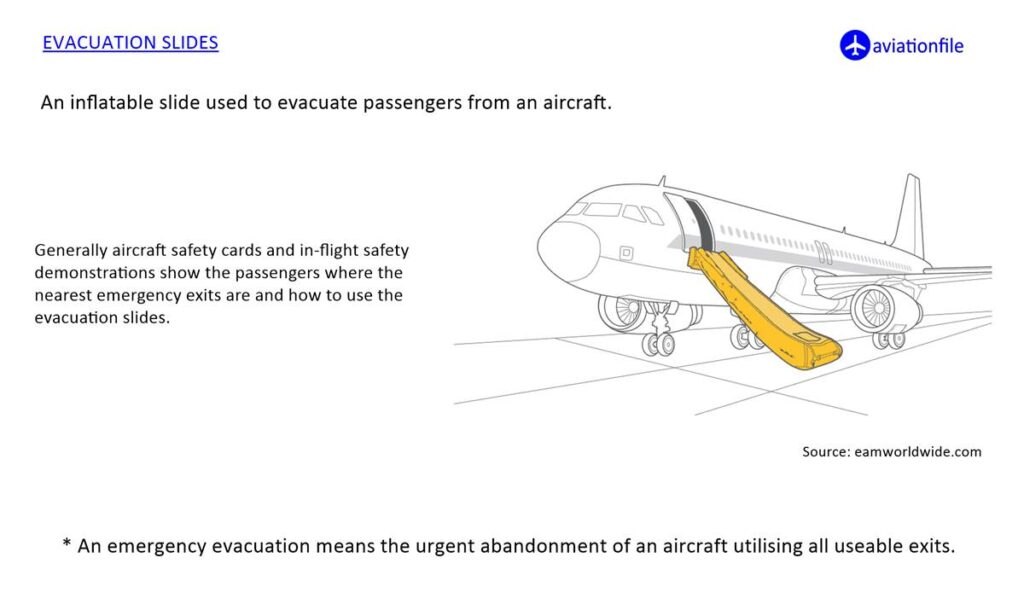
After landing, the plane had to be evacuated very quickly. Because the plane was about to sink. Evacuations started and passengers started to slide from the emergency evacuation slides in a panic. Meanwhile, the local press and many search and rescue teams learned about the situation and rescue efforts began. On the one hand, the plane was sinking and the rescue efforts were continuing. As a result, none of the people on the plane died in the accident and everyone was evacuated. A miracle had come true.
The plane landed in the Hudson River at 3.31 pm, just 6 minutes after taking off from LaGuardia Airport at 3.25 pm…
The incident was investigated by the National Transportation Safety Board. They published a report in May 2010 concluding that Sullenberger had chosen well. Airplane of Flight 1549 is on exhibition at the Carolinas Aviation Museum in Charlotte.
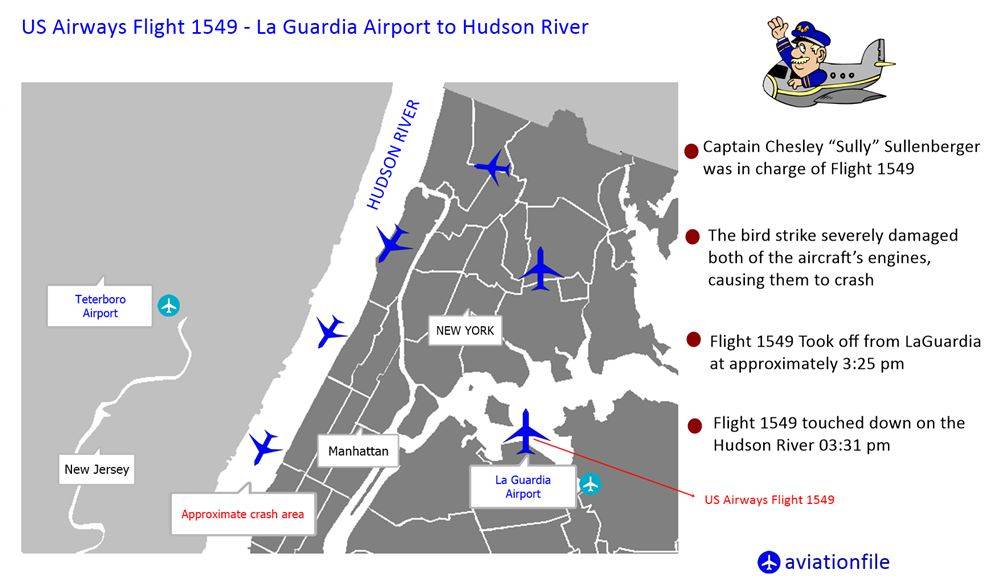
The Birds – Canadian geese
On the afternoon of January 15, 2017, a flock of Canadian geese flew in a loose echelon formation at a height of around 3,000 feet over the Bronx, going about their daily activities without any particular intentions. The origins, destinations, and motivations of those individual geese will never be known, but they were likely huge, well-fed, and content with their lot. They were also fairly illiterate. Since they were only birds, their foolishness cannot be blamed, but since geese are reputed to be adaptable creatures, it is difficult to shake the feeling that they should have known better than to fly aimlessly above New York City.
A complete century had passed by last January since the first bird was killed by people suddenly flying around. On September 7, 1908, Orville Wright was in charge and successfully pursued the bird. Since then, the situation for birds has gotten much worse. Civil airplanes impacted birds several hundred thousand times between 1990 and 2007 in the United States alone, frequently killing many birds at once. The death toll appears to have leveled off around 2002 due to a drop in air travel after the September 11 attacks, however, this reprieve only lasted a short while. By 2007, the killing had reached record levels, with it, a propensity to place the blame on the victims and treat them harshly on the ground.
In the US, there are about six billion birds, all of which are simple targets. “Mitigation” is the term for their persecution of them on the ground. Politically, Canada geese are particularly at risk. On that particular day, those flying over the Bronx were doing so at a low altitude while also navigating to keep their colleagues in view and adjusting the vortices emanating from one another’s wings. These are the intended uses of goose formations, in theory. Of course, nature is also wonderful. But they flew into the departure hall at La Guardia Airport sometime just before 3:30 p.m.
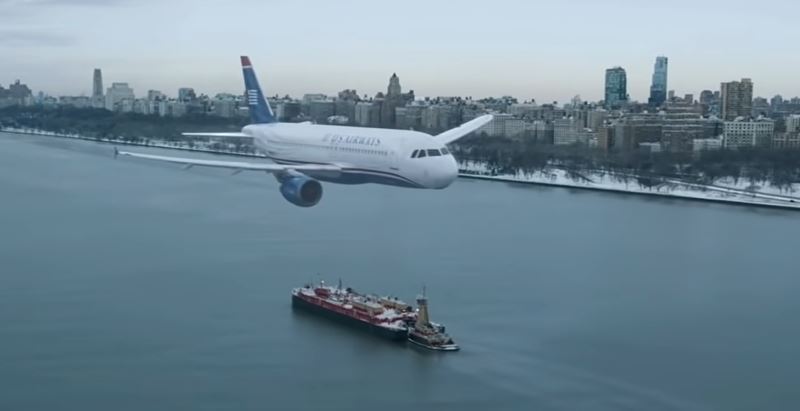
The Collision of Flight 1549
First Officer Skiles was operating the aircraft from the right seat. In the left seat, Captain Sullenberger was operating the radio and attending to duties. They checked in with New York departure control after climbing out of 700 feet and speeding to roughly 230 mph. After being recognized on radar, they were given the all-clear to ascend to 15,000 feet. They came across the birds about a minute later, at 3:27 p.m. Skiles noticed them first. Sullenberger recalls that they emerged in a line formation ahead, above, and to the right of him and gave him only a brief moment to speak before they appeared to fill the windscreen. An Airbus A320 weighs more than 150,000 pounds when it is ready to take off. Although it has a very clever design and is agile for its size, it cannot defy physics any more than any other airplane can.
The cockpit voice recorder captured the thumps made by the geese. It’s possible that in their final moment of existence when the airplane closed upon them, they responded in fear by folding their wings and falling, as birds do. These were most likely the geese who perished when they fell into the Airbus from above as it flew through their flock. Their tally is unknown. Some of them impacted the leading edges of the wings, the tail, and the nose’s curvature of the fuselage. Others walked straight into the side engines.
As a result, the engines experienced surges and compressor stalls, which are characterized by loud bangs. Air compressors are jet engines. They use fans and heat to compress the air, which they then rapidly push out the back. The fact that both engines had recently been wrecked was the fundamental issue in this situation. They started to calm down in response. The smell of burning fowl permeated the cabin. Sullenberger said, “My aircraft,” and took the controls in the cockpit, not because he didn’t trust Skiles to do the job but rather because, as the pilot in command, he was in charge of the aircraft.
REFERENCES
Nast, C., 2022. US Airways Flight 1549: Anatomy of a Miracle. [online] Vanity Fair. Available at:
<https://www.vanityfair.com/culture/2009/06/us-airways-200906> [Accessed 3 July 2022].
Wikipedia. 2022. US Airways Flight 1549 – Simple English Wikipedia, the free encyclopedia. [online] Available at: <https://simple.wikipedia.org/wiki/US_Airways_Flight_1549> [Accessed 3 July 2022].
